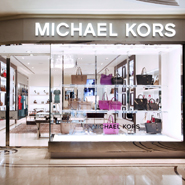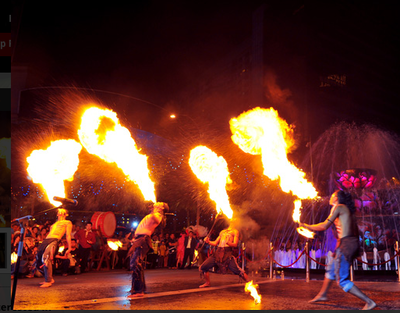After China and India, Malaysia, Kazakhstan and Indonesia are the most promising developing retail markets, according to an A.T. Kearney report.
China and India are predictably the two most markets with the most potential, thanks in large part to their enormous populations, but the APAC region in general is full of promise. With retail sales in developing markets now constituting more than half of global revenue, brands must be precise in determining which developing markets offer the greatest opportunity.
“For general retail, the ability to scale is crucial – thus why the GRDI has a minimum population cutoff and looks at the number of cities with more than 1 million population in each country,” said Jodie Kassack, study co-author and a consultant in A.T. Kearney’s retail and consumer practice. “For luxury, the number of high-net-worth individuals is much more relevant.
“While markets attractive for overall retail tend to also be attractive for luxury, there are ‘small gems’ like Qatar, Panama, or Mongolia that are no longer ranked on the GRDI, but have concentrated pockets of wealth ripe for luxury brands to tap into.”
“The 2016 Global Retail Development Index” ranks on a 100-point scale 30 developing countries with populations of at least 5 million and a GDP per capita of at least $3,000. Rankings were determined by market attractiveness, market saturation, time pressure and country and business risk, with each component also broken down into various parts.
Rising stars
The newly increased population threshold for the study has led to a handful of promising nations, including Uruguay (2nd in 2015), Qatar (4th) and Mongolia (5th) being dropped from the ratings. Additionally, the time pressure component now looks at a two-year period rather than a four-year period because of an increasingly dynamic retail market.
The report also includes profiles and retail data for each of the 30 countries included in the index, as well as broader regional overviews.
The difference between China and India is a mere 1.5 points, but the difference between second-place India and third place Malaysia is greater than the difference between third-place Malaysia and 15th place Colombia, indicating the massive potential of China and India, which together make-up more than a third of the world population.
After the two giants, Vietnam is ranked as the most urgent market to enter, with the Philippines, Kazakhstan and Indonesia following. Brazil’s economic implosion makes it the least time-sensitive market, with Ghana, South Africa, Tunisia and United Arab Emirates following.
Notably, nine African countries – three North African and six Sub-Saharan – are in the top 30, though that potential in the luxury sector will likely take several more years to harness. On the flip side, if the Trans-Pacific Partnership is ratified, Vietnam and Malaysia could see GDP increase by double digits, lending more urgency to booming Southeast Asia.
Economic turmoil in Latin America closes off the market, although luxury spending continues to increase in Brazil. Devalued currency is forcing the country’s upper classes to spend within the country’s borders rather than abroad.
Chile and Mexico are also now “closing” markets, characterized by expensive real estate and high competition. On the flipside, however, Colombia is experiencing retail CAGR of nearly 12 percent, incomes are increasing quickly and consumers have embraced omnichannel retailing.
Despite oil troubles, Azerbaijan’s luxury sector is growing quickly as the country invests in its tourism sector. The falling price of oil has also helped Russia’s luxury sector, as the resulting decrease in the value of the ruble has led to increased domestic spending among the nation’s affluents and to increased tourism. Increased domestic spending has led to Russian tourism in United Arab Emirates drop 20 percent, hurting its luxury sector.
Diminishing oil revenue has also prompted Kazakhstan to turn to retail as a source of growth. Long-term business opportunities are questionable, but Chopard and Bulgari are among those who have recently opened new outlets in its Esentai Mall. Ecommerce is expected to proliferate as Russia’s Lamoda and China’s AliExpress work to enter the market, and CAGR approaching double digits is also promising.
Egypt, along with Nigeria, is identified as “opening” countries, noted by relaxing governmental restrictions and growing middle classes. Egypt is stabilizing quickly in the aftermath of the Arab Spring, making it ideal for travelers, while the population of 89 million and a fast-growing middle-class will help retail sales double over the next five years.
Nigeria’s middle-class is exploding, but the lower GDP per capita and retail sales mean that opportunity for luxury is still a long-term proposition.
Different outlooks
In Indonesia, whose population of 256 million is the most of any nation in the top 30 aside from China and India, recent administrative changes have created a space for luxury to flourish.
To combat slow growth in its economy and encourage consumers to purchase more merchandise at home, Indonesia has removed the luxury tax on most goods.
In an announcement on June 11 of 2015, the finance minister of the country said that the majority of items would now be exempt from luxury tax, which could range up to 75 percent. Domestic consumption had slowed, but this tax relief is aiming to boost shopping spree sales before the period of fasting during Ramadan (see story).
Some brands, including Aston Martin, were quick to take advantage of the newly positioned market (see story).

Aston Martin Indonesia opening
While monitoring developing countries for growth potential is now a crucial component of business, the growth of large cities is sometimes more independent of the larger nation, meaning that monitoring these smaller units can also present growth opportunities.
London has unseated New York as the global city best able to attract and retain global capital, people and ideas, according to another A.T. Kearney report.
Since 2008 the United Kingdom’s capital has played runner-up to New York, but their positions have now switched, the only change from last year’s top 10. As some economists and political scientists point to cities as replacements for nation-states as the world’s primary drivers in light of urbanization, a city-specific and localized approach to business could be a sensible and more precise alternative to current models (see story).
“When brands choose to enter a market depends on their risk appetite,” Ms. Kassack said. “Early entrants benefit from first mover advantage but have to deal with significant challenges like lack of luxury real estate, poor infrastructure, and corruption and bureaucracy. Late entrants enjoy greater ease of doing business but must play catch up.
“A country that is ‘opening’ for overall retail may already have attractive pockets for luxury,” she said. “For example, Ferragamo opened its first store in Cairo in 2010 and its second store in 2012. Zegna pioneered entry into Nigeria with a store in Lagos in 2013.”
from
http://redirect.viglink.com?u=http%3A%2F%2Fredirect.viglink.com%2F%3Fu%3Dhttps%253A%252F%252Fwww.luxurydaily.com%252Fasia-prospers-signs-of-life-in-latin-america-and-africa-for-retail-potential-report%252F%26key%3Dddaed8f51db7bb1330a6f6de768a69b8&key=ddaed8f51db7bb1330a6f6de768a69b8




No comments:
Post a Comment